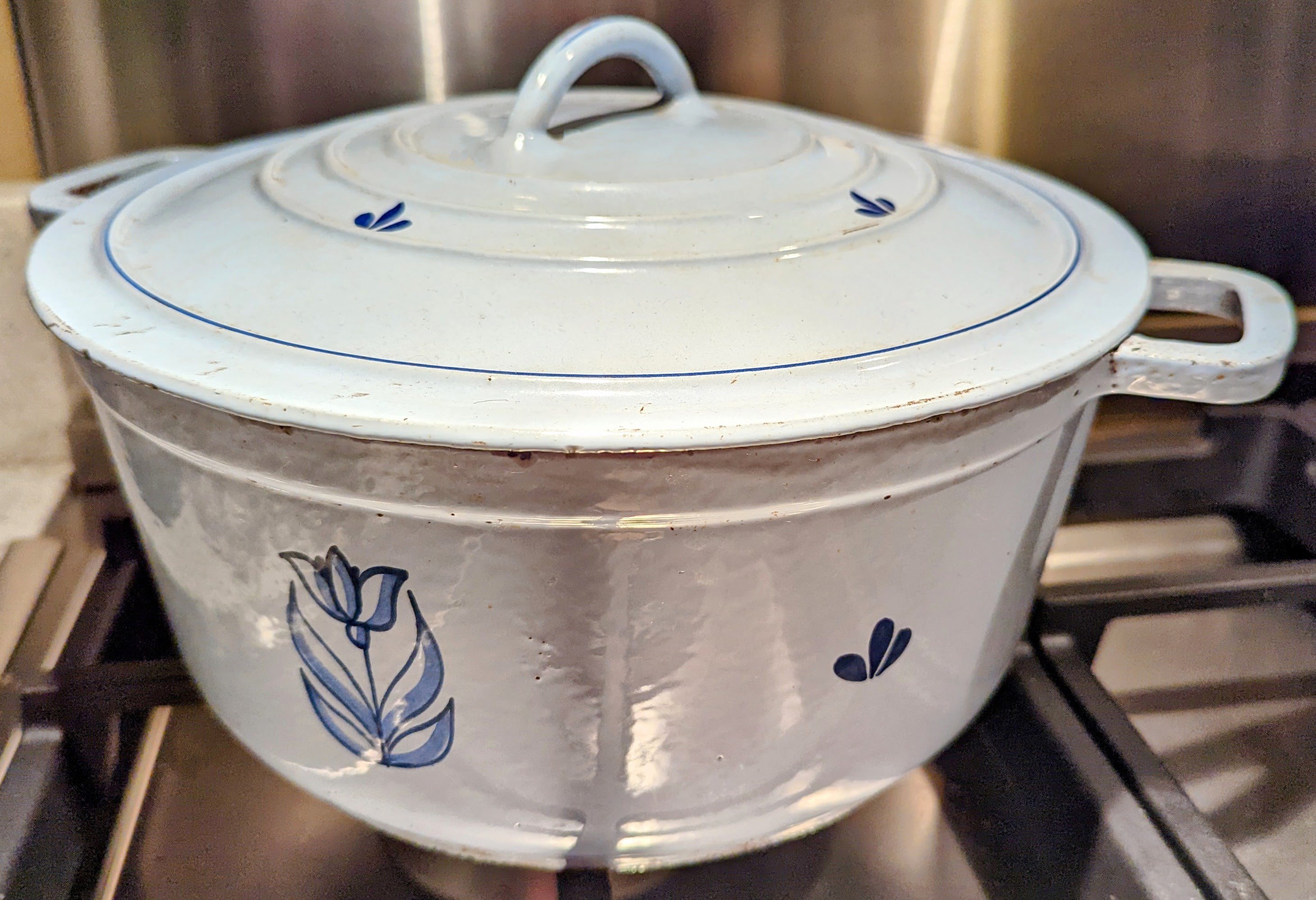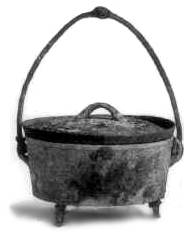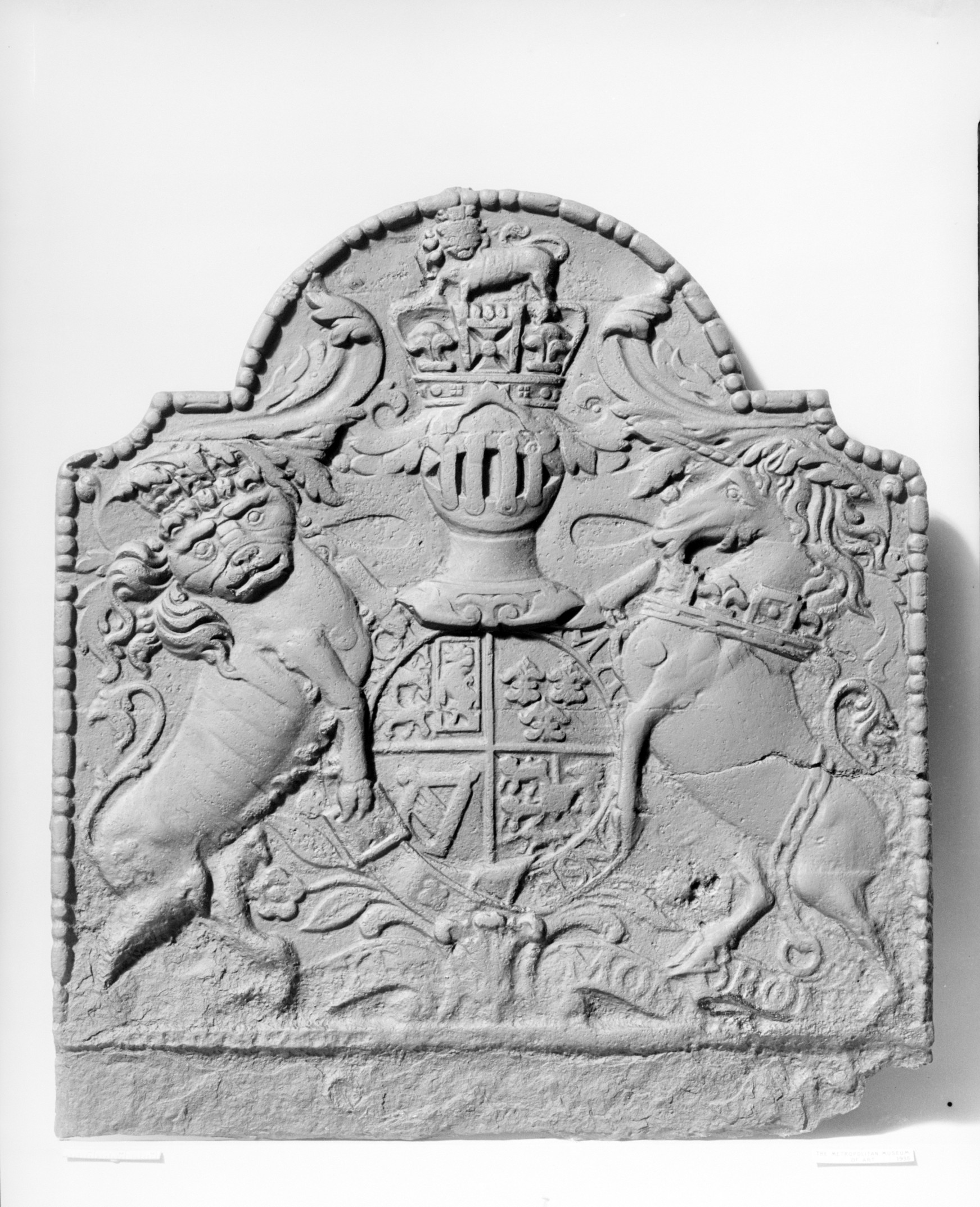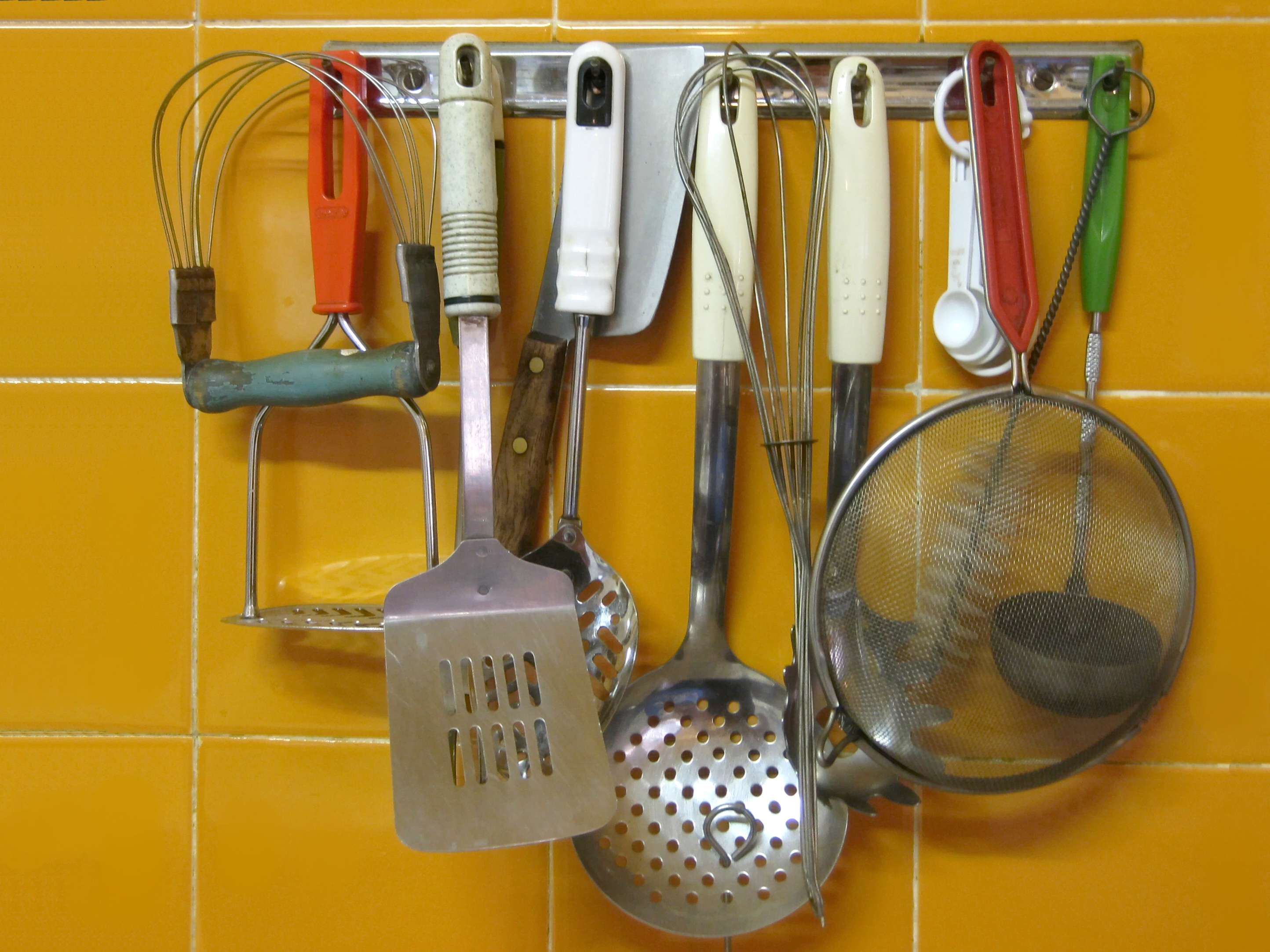|
Cousances
Cousances was the brand of enameled cast iron cookware ("cocotte" in French). originally manufactured by a foundry in the town of Cousances-les-Forges in northeastern France. The Cousances foundry began making cast iron pans in 1553. Four centuries later, in 1957, the brand was acquired by Le Creuset. Cookware under the Cousances brand continued to be manufactured by Le Creuset into the early 1980s. A conspicuous Cousances design was a dutch oven called the ''Doufeu'' (literally "gentle fire") in which the sunken or recessed lid was kept at a reduced temperature by placing ice cubes on top and allowing the steam inside to condense. As the inside of the lid was dotted with smooth protrusions or notches, the condensed droplets sprinkled back evenly on the cooking food to baste it. The Cousances foundry also made cast-iron firebacks, with one example of a design with stamp, "DECOUSANCES" dating to 1690. See also * Descoware * Druware * Le Creuset Le Creuset (, me ... [...More Info...] [...Related Items...] OR: [Wikipedia] [Google] [Baidu] |
Cousances-les-Forges
Cousances-les-Forges () is a commune in the Meuse department in Grand Est in north-eastern France. See also *Communes of the Meuse department The following is a list of the 499 communes of the Meuse department of France. The communes cooperate in the following intercommunalities (as of 2020):Cousanceslesforges {{Meuse-geo-stub ... [...More Info...] [...Related Items...] OR: [Wikipedia] [Google] [Baidu] |
Le Creuset
Le Creuset (, meaning "the crucible") is a maker of enameled cast-iron cookware. The company's first model was manufactured in the town of Fresnoy-le-Grand in France in 1925 and was similar in function to a dutch oven, but with T-shaped handles designed by the Italian industrial innovator Enzo Mari. The Le Creuset dutch oven is on display in the Smithsonian Institution's National Museum of American History in Washington DC as a part of the recreation of the chef Julia Child's kitchen. It has been widely reported to be her favorite cooking pot, though specialist sources hold that it was the dutch oven of Le Creuset's now-less-remembered competitor Descoware that was her real favorite. The company also makes many other types of cookware and bakeware, from fondue-sets to tagines. History Le Creuset was founded in Fresnoy-le-Grand, Aisne, Picardy at the crossroads of transportation routes for iron, coke, and sand. Armand De Saegher (a Belgian casting specialist) and Octave Aube ... [...More Info...] [...Related Items...] OR: [Wikipedia] [Google] [Baidu] |
Enameled Cast Iron
Heavy-duty cookware made of cast iron is valued for its heat retention, durability, ability to maintain high temperatures for longer time duration, and non-stick cooking when properly seasoned. Seasoning is also used to protect bare cast iron from rust. Types of cast iron cookware include frying pans, dutch ovens, griddles, waffle irons, flattop grills, panini presses, crepe makers, deep fryers, tetsubin, woks, potjies, and karahi. History In Asia, particularly China, India, Korea and Japan, there is a long history of cooking with cast iron vessels. The first mention of a cast-iron kettle in English appeared in 679 or 680, though this wasn't the first use of metal vessels for cooking. The term ''pot'' came into use in 1180. Both terms referred to a vessel capable of withstanding the direct heat of a fire. Cast-iron cauldrons and cooking pots were valued as kitchen items for their durability and their ability to retain heat evenly, thus improving the quality of cooked mea ... [...More Info...] [...Related Items...] OR: [Wikipedia] [Google] [Baidu] |
Cookware And Bakeware
Cookware and bakeware is food preparation equipment, such as cooking pots, pans, baking sheets etc. used in kitchens. Cookware is used on a stove or range cooktop, while bakeware is used in an oven. Some utensils are considered both cookware and bakeware. There is a great variety of cookware and bakeware in shape, material, and inside surface. Some materials conduct heat well; some retain heat well. Some surfaces are non-stick; some require seasoning. Some pots and their lids have handles or knobs made of low thermal conductance materials such as bakelite, plastic or wood, which make them easy to pick up without oven gloves. A good cooking pot design has an "overcook edge" which is what the lid lies on. The lid has a dripping edge that prevents condensation fluid from dripping off when handling the lid (taking it off and holding it 45°) or putting it down. History The history of cooking vessels before the development of pottery is minimal due to the limited archaeolog ... [...More Info...] [...Related Items...] OR: [Wikipedia] [Google] [Baidu] |
Descoware
Descoware is a discontinued brand of porcelain- or enamel-coated cast iron cookware Among notable Descoware pots are dutch ovens. Although Descoware is now little-remembered, specialist sources hold that it was the favorite cooking ware of legendary American cooking instructor and television personality Julia Child, more so than Le Creuset whose association with the chef has been widely reported. Child regularly used Descoware on her television show The French Chef. The Smithsonian Institution's installation about Child's kitchen featured a large orange Descoware pot on top of Child's own stove. It was created by David E. Sanford of the D.E. Sanford Company, later known as Desco Corporation. Sanford purchased the manufacturing rights to the Bruxelles Ware process from General Housewares Corporation in the 1940s, giving him the right to sell the products in the United States. Bruxelles Ware was originally manufactured in France. Sanford changed the brand name, and contracted ... [...More Info...] [...Related Items...] OR: [Wikipedia] [Google] [Baidu] |
Druware
Druware, also known as DRU Holland cookwareThe Cast Iron Collector and Royal Dru, was a line of porcelain-enamel-coated cast-iron cookware made by the De Koninklijke Diepenbrock & Reigers of Ulft (DRU) company in Achterhoek, Netherlands.DRU: Our Story Imports to the United States The pots and pans were popular in the United States during the middle of the 20th century, after Robert Evans began importing the cookware from The Netherlands, with gross annual sales of $1.5 million in 1956, and nearly $2 million in 1957. In 1960, DRU incorporated a wholly-owned subsidiary in Cambridge, Massachusetts, to manage distribution. Popularity The most popular line of Druware came in pastel shades of Delft Blue, Tulip Yellow, and Key Largo Green, and was recognizable for the hand-painted tulip, windmill, and fleur-de-lis decorations on the sides and lids of each piece. A flame orange color, as well as "Holiday White" (white enamel, with the signature tulip design in blue) and an ... [...More Info...] [...Related Items...] OR: [Wikipedia] [Google] [Baidu] |
France
France (), officially the French Republic ( ), is a country primarily located in Western Europe. It also comprises of Overseas France, overseas regions and territories in the Americas and the Atlantic Ocean, Atlantic, Pacific Ocean, Pacific and Indian Oceans. Its Metropolitan France, metropolitan area extends from the Rhine to the Atlantic Ocean and from the Mediterranean Sea to the English Channel and the North Sea; overseas territories include French Guiana in South America, Saint Pierre and Miquelon in the North Atlantic, the French West Indies, and many islands in Oceania and the Indian Ocean. Due to its several coastal territories, France has the largest exclusive economic zone in the world. France borders Belgium, Luxembourg, Germany, Switzerland, Monaco, Italy, Andorra, and Spain in continental Europe, as well as the Kingdom of the Netherlands, Netherlands, Suriname, and Brazil in the Americas via its overseas territories in French Guiana and Saint Martin (island), ... [...More Info...] [...Related Items...] OR: [Wikipedia] [Google] [Baidu] |
Dutch Oven
A Dutch oven (not to be confused with masonry oven) is a thick-walled cooking pot with a tight-fitting lid. Dutch ovens are usually made of seasoned cast iron; however, some Dutch ovens are instead made of cast aluminium, or ceramic. Some metal varieties are enameled rather than being seasoned, and these are sometimes called French ovens. Dutch ovens have been used as cooking vessels for hundreds of years. They are often called casserole dishes in some English-speaking countries other than the United States ( means "cooking pot" in French), and in French. They are similar to both the Japanese and the , a traditional Balkan cast-iron oven, and are related to the South African , the Australian Bedourie oven and Spanish . History Early European history During the 17th century, brass was the preferred metal for English cookware and domestic utensils, and the Dutch produced it at the lowest cost, which, however, was still expensive. In 1702, Abraham Darby was a partner in the Bras ... [...More Info...] [...Related Items...] OR: [Wikipedia] [Google] [Baidu] |
Fireplace Fireback
A fireplace fireback is a piece of heavy cast iron, sized in proportion to the fireplace and the fire, which is placed against the back wall of the fireplace. Functions The primary functions of a fireback are to protect the wall at the back of the fireplace and radiate heat from the fire into the room. The protection was especially important where the wall was constructed of insubstantial material such as daub (a mud and straw mixture coating interwoven wooden wattles), brick or soft stone. Protective metal plates that became available when cast iron was developed enabled fires to be placed against walls without danger to the fabric of the building. The other function of the fireback is to act as a radiator of stored heat. The metal is heated by the fire, and then that heat is radiated into the room. The thick iron keeps the heat which would otherwise be lost and gives back this heat to the room. A fireback thus may increase the efficiency of the fire. Wood fires have low efficienc ... [...More Info...] [...Related Items...] OR: [Wikipedia] [Google] [Baidu] |
Kitchenware Brands
:'' For a record label, see Kitchenware Records'' Kitchenware are the tools, utensils, appliances, dishes, and cookware used in food preparation, or the serving of food. Kitchenware can also be used in order to hold or store food before or after preparation. Types Kitchenware encompasses a wide range of tools. Some of the most common items of kitchenware are: See also * Batterie de cuisine * Cookware and bakeware * Gastronorm, a European size standard for kitchenware * List of cooking vessels * List of eating utensils * List of food preparation utensils * List of glassware * List of Japanese cooking utensils * List of serving utensils * List of types of spoons * NSF International, formerly "National Sanitation Foundation" * Tableware Tableware is any dish or dishware used for setting a table, serving food, and dining. It includes cutlery, List of glassware, glassware, serving dishes, and other items for practical as well as decorative purposes. The quality, nature ... [...More Info...] [...Related Items...] OR: [Wikipedia] [Google] [Baidu] |
Cooking Vessels
Cooking, cookery, or culinary arts is the art, science and craft of using heat to prepare food for consumption. Cooking techniques and ingredients vary widely, from grilling food over an open fire to using electric stoves, to baking in various types of ovens, reflecting local conditions. Types of cooking also depend on the skill levels and training of the cooks. Cooking is done both by people in their own dwellings and by professional cooks and chefs in restaurants and other food establishments. Preparing food with heat or fire is an activity unique to humans. Archeological evidence of cooking fires from at least 300,000 years ago exists, but some estimate that humans started cooking up to 2 million years ago. The expansion of agriculture, commerce, trade, and transportation between civilizations in different regions offered cooks many new ingredients. New inventions and technologies, such as the invention of pottery for holding and boiling of water, expanded cooking tech ... [...More Info...] [...Related Items...] OR: [Wikipedia] [Google] [Baidu] |

.jpg)





